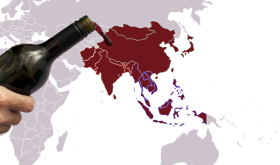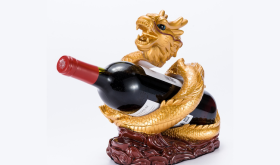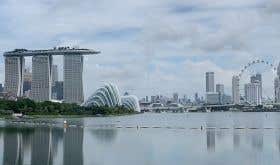I can think of only two entities in this world that were born in 1949 and became one of the world’s largest wine consumers before the age of 70. One of them is Oz Clarke, the other is the People’s Republic of China.
Since the PRC is throwing a rather lavish birthday party this month, it seems timely to investigate what and how much they’re drinking: not necessarily at the celebrations themselves but in a more general sense, to assess the current fortunes of wine in what has become a prime target for the global wine trade.
China has been fêted as the most promising emerging wine market of recent years, and it certainly appears to have great untapped growth potential. But is the gold rush sustainable? And in this uncertain world, with trade wars more than in the air, what might happen next for China and its neighbours?
As the world’s second-largest economy, China looms large across Asia. Singapore and Hong Kong may still hold important strategic functions and offer friendlier business environments, but they are also mature markets for wine and therefore closer to full capacity.
Much is made of the statistics on Chinese wine drinkers. The ‘luxury wine feature’ of the Asia Wealth Report indicates that there are 48 million millennial wine drinkers in China, a figure that is allegedly growing by 25% every year. In this 2018 podcast, Hong Kong-based Master of Wine Sarah Heller reports that 55 million Chinese wine drinkers ‘regularly consume imported wine’, another area of significant growth.
This seems to be underlined by profit reports from the likes of Treasury Wine Estates, the Australian company that owns Penfolds, etc, and whose Asian sales rose 43% last year, driven by ‘increased Chinese demand for luxury wine’ – perhaps including their new Baiju-fortified wine, as pictured below at Singapore airport, where it was for sale at SG$150 (£88/€99/$109). For more on Australia’s fortunes in China, see Max Allen’s recent survey of Australian wine From Kanga Rouge to Kangarouge (also featuring Oz Clarke).
But only six months ago, Jancis reported that Chinese growth was slowing, especially as a possible recession may be on the cards. Imported wine apparently shrank 10% by volume last year, according to customs records, and the important Bordeaux wine exporters have certainly registered a decline in Chinese enthusiasm for their wares. As for China’s winemaking capacity, this too was called into question, with one expert estimating that 90% of China’s vineyard grows grapes destined for eating rather than fermentation.
What’s certainly true is that the first boom in Chinese wine consumption – driven by gifting bottles, usually as part of a business transaction – has passed. However, ‘giving face’ is still a vital part of Chinese culture, which has the effect of magnifying the latest trend: sharing the right bottles is an important part of showing your credibility and prestige. Right now, the latest trend is Burgundy, which with its fragmented and scarce production, has inevitably become a very expensive habit.
The obsession with Burgundy will diminish, however, just as the preceding one for Bordeaux has done. Lafite is apparently still a name to be conjured with in China, although the word itself features very discreetly on the bottle of relatively junior Pauillac from the Lafite stable pictured above, also seen in Singapore airport. Speaking to various merchants who trade in China, I'm left without any clear idea of what will come next, although Napa, Piemonte or even natural wine have been mooted as possibilities.
However, there does seem to be agreement that fine Chinese wine won’t be the next big thing, since even China's best wines currently lack the all-important credibility of their French counterparts – even if the prices are comparable.
But if we consider how dramatically wine production and consumption have evolved in the last 70 years, anything is possible in the next 70.
















